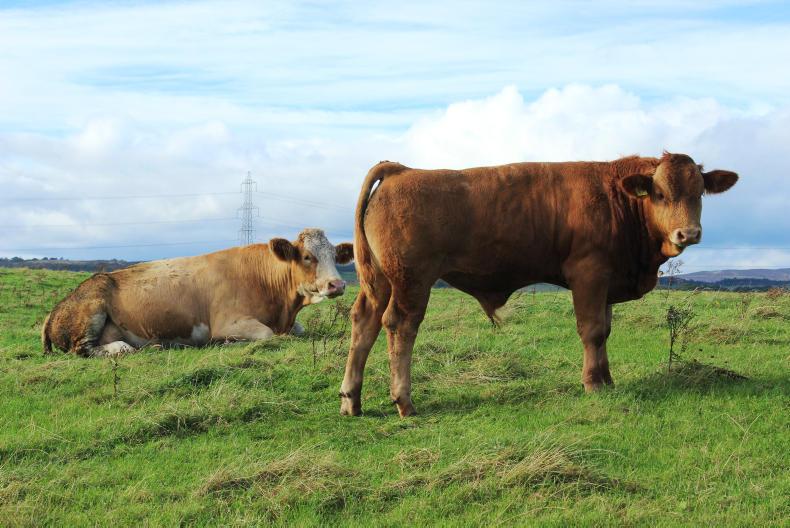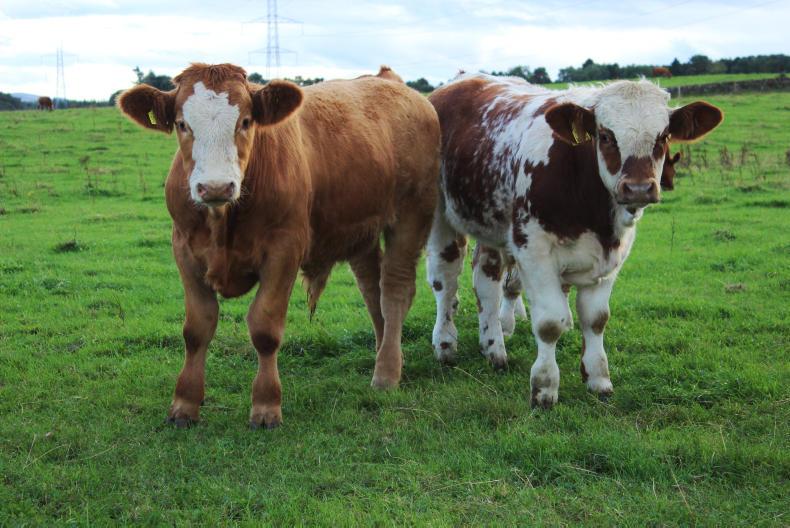If you are not measuring it, you cannot manage it. It is a relatively simple statement, but one that few suckler-beef farmers live by. One farmer who adopts this philosophy is Adrian Ivory, who runs a herd of 150 commercial spring-calving cows in Perthshire.
All aspects of physical and financial performance are recorded annually. The information is then used as the basis for future production and cattle-breeding decisions. All data recorded is reviewed twice per year by Adrian, along with his vet, cattle nutritionist and stockmen.
Successful decisions are then built upon for the following year, while problems are investigated to find the cause and prevent such issues from recurring.
In farming, just like any other business, it is only when you make decisions based on actual data that you begin to see real changes for the better. For Adrian, it is the only way to operate a profitable business that yields a return on labour and investment.
Farm background
Adrian runs a large-scale farming operation near Meigle in of Scotland. It is a prime fertile farming area, with arable, fruit and veg dominating the landscape.
The farming operation comprises 1,600 acres of crops and 430 acres of grassland grown in a four-year crop rotation. Homegrown cereals are used for cattle feed and straw used for bedding.
Along with the 150-cow suckler herd, there is a successful pedigree Simmental and pedigree Charolais breeding herd.
The commercial suckler herd is made up of Simmental, South Devon and Shorthorn genetics. Cow type is nothing fancy, just a good functional R grade cow. Calving interval is 369 days, with all cows calving over a 12-week period. Heifers are all homebred and calve into the herd at 24 months of age.
Cow efficiency
Cow efficiency is an area that Adrian is now heavily focused on. The future breeding decisions of the herd will be based on cow efficiency.
The key areas that he is concentrating on are the percentage of calf weight weaned relative to the cow’s liveweight at 200 days of age, the cost of getting the calf to weaning stage and what is the margin over feed after finishing cattle.
“Big cows are inefficient and do not necessarily wean heavy calves. They also require too much feeding to maintain them. I want to reduce cow size to around 650kg liveweight and improve weaning weights to at least 50% of cow weight,” said Adrian.
Mature cow liveweight is 716kg, with cows ranging from 545kg to 845kg. In 2015, calves were weaned shortly after housing on 1 November. Actual weaning weight averaged 342kg for bull calves and 325kg for heifer calves, with an average date of birth of 7 April 2015.
Actual weaning weight has been corrected to a standard weaning weight at 200 days of age to allow a fair comparison between early and later-calving cows.
This brings bull calves to an average weaning weight of 328kg and an average daily liveweight gain of 1.42kg/day from birth. Weight gain in bull calves ranged from 0.71kg/day to 1.71kg/day. Heifer calves averaged 292kg and a daily gain from birth of 1.23kg/day.
Cows weaned on average 46.3% of their liveweight at 200 days. There was a huge range in weaning percentage, from 23.5% to 64%. The highest weaning percentage came from a 555kg cow weaning a 327kg calf, compared with an 800kg cow weaning a 188kg calf.
There were some lighter cows around the 700kg mark weaning less than 40% and a few heavier cows around 800kg weaning over 40%, which is why Adrian also looks at the cost of feeding the cow to weaning and the margin over feed before deciding on which cows to cull.
Cost of weaning weight
Cows go to grass as they calve on the farm and creep feeders are introduced around 1 July. Calves are fed a mix of 50% barley, 25% oats and 25% sugar beet pulp, with a ration costing £160/t.
The cost of feeding the cow and calf unit from birth to weaning is calculated and also used to decide on which cows will be culled, as well as which cows the replacement heifers will be retained from.
On average, the suckler cows consumed 2.37t of dry matter over a 166-day grazing season. Feed costs for the cows averaged £1.18/day to rear a calf to weaning at 200 days, or a total cost of £236/cow. Daily feed costs for feeding the cow from calving until weaning ranged from £0.87 to £2.24 .
Average feed cost for keeping the cow from calf to calf was £379. This is also important to Adrian, as it reflects cow fertility and the cost of feeding cows between each calving.
An 810kg cow weaned a 310kg calf (42%) on a 380-day calving interval, which is relatively good fertility. But due to the size of the cow, the cost of feeding the cow from calf to calf is well above the herd average at £442.
Bull beef
Male progeny are taken through to finish as young bulls at an average age of 422 days (14 months). Average carcase weight is 407kg at 58% kill-out, which is excellent, given that 50% of the animal is either South Devon or Shorthorn genetics.
Weaning weight is important in Adrian’s opinion, as the heavier the weaning weight, the less weight gain is required from weaning until slaughter during the intensive feeding period.
Once weaned, bulls are moved on to the finishing diet, which consists of a daily blend of 7kg of barley, 12kg of potatoes, 1kg of straw/silage and 1kg of a balancer with minerals.
Bulls are weighed at weaning in November and again in March. After this point, bulls are weighed every 21 days to monitor weight gain and feed efficiency. Once weight gain drops below feed cost and cattle are fit, bulls are marketed and 96% of bulls meet gold-box standard.
Bulls are gaining 2kg of liveweight per day during the final 60 to 100 days of the finishing period. Bulls are sold to ABP Perth and slaughter data shows that 84% of the bulls have a daily carcase gain of 0.9kg or better, compared with just 35% of other farmers supplying young bulls to the same factory.
Bull performance
Finishing costs for the 2015-born bulls slaughtered this spring averaged £254/head or £1.19/day.
Daily weight gain averaged 1.7kg/day from weaning until finishing. Finishing costs ranged from £199 to £325. Sire performance is also noted, so that the best genetics are used to suit cow type.
Once sold, margin over feed is also calculated. This combines the feed cost of keeping the cow from calf to calf plus the total finishing cost of the bull and deducts it from the sale value of the bull. The average margin over feed was £720, with a range of £455 to £909. Fixed costs and labour are excluded from this.
Margin over feed indicates which cows are easier maintained, as they have a lower feed cost and wean heavier calves relative to their feed cost. If they are breeding faster-growing cattle, then their progeny will have a shorter finishing period.
A shorter finishing period will see the bull consume less feed, but still deliver a carcase that meets market spec and has a high market value.






 This is a subscriber-only article
This is a subscriber-only article
















SHARING OPTIONS: